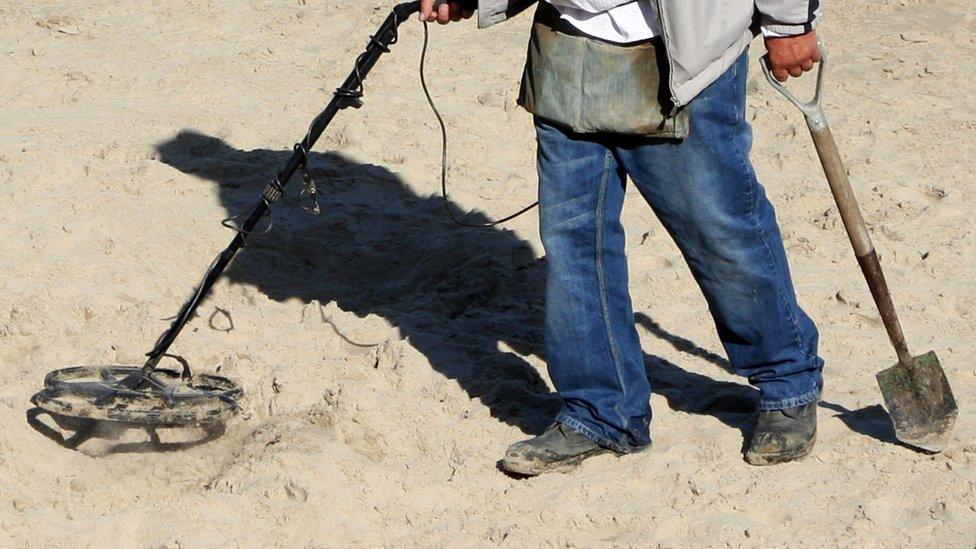What do treasures reveal about Wales' past?
- Published
Dr Rhianydd Biebrach on the treasure found down a rabbit hole
Treasure discoveries are on the increase in Wales with the growing popularity of metal detecting helping to boost important historical finds.
So, what are some of the most significant objects declared as treasure in Wales in recent years and what do they tell archaeologists about Wales in the past?
Here, Dr Adam Gwilt and Dr Rhianydd Biebrach of the National Museum Wales explain more at some the finds.

Coin hoard found in Wenvoe, Vale of Glamorgan
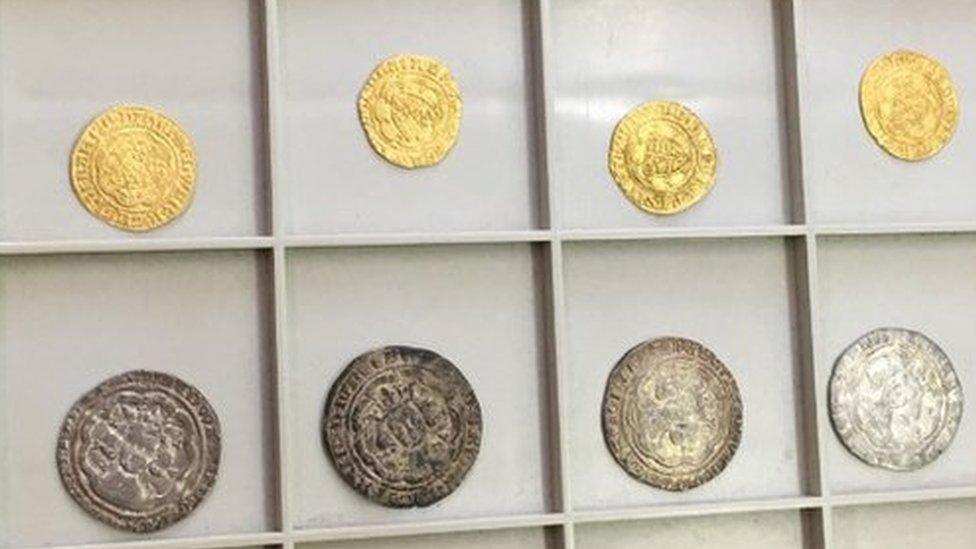
This group of medieval coins - five gold and 12 silver - were discovered together in 2012 by a metal detectorist and date from around 1370.
The coins are from Edward III's reign - they have his head on them - and they would have been worth a significant amount and seem to have been deliberately buried together.
Dr Gwilt, principal curator of prehistory, said: "One of the things we want to know about as archaeologists is why groups of objects were buried deliberately in the ground. Sometimes it may have indicated times of war or danger.
"At other times there may have been careful concealment to return another time to retrieve those objects and, unfortunately, they're losses that were never brought back."
The discovery of complete coin hoards is quite rare with only three to six reported every year dating from Roman to medieval times.

Bronze axes found in south east Wales

This hoard of bronze axes date to around 2,800 years ago and were found buried together in 2012 by a metal detectorist.
"These are typical objects from near the end of the Bronze Age and we see a large number of these hoards in south east Wales," said Dr Gwilt
"They have seemingly been buried deliberately and are all complete.
"So the puzzle for us is why did people bury their valued objects in the ground when they could have continued using them.
"The more we look the more we can find evidence that people were carefully concealing these deposits - probably for religious reasons towards the end of their lives.
"By looking at deposits on the blades you can see blue patternisation on the bronze and our conservators think this was probably because these objects were burned immediately before they were placed carefully into the ground.
"Perhaps there was almost a cleansing at the end of their lives.
"So we're building up from the clues to get a picture of the thinking behind the people who owned these objects."

Ring found in Carew, Pembrokeshire
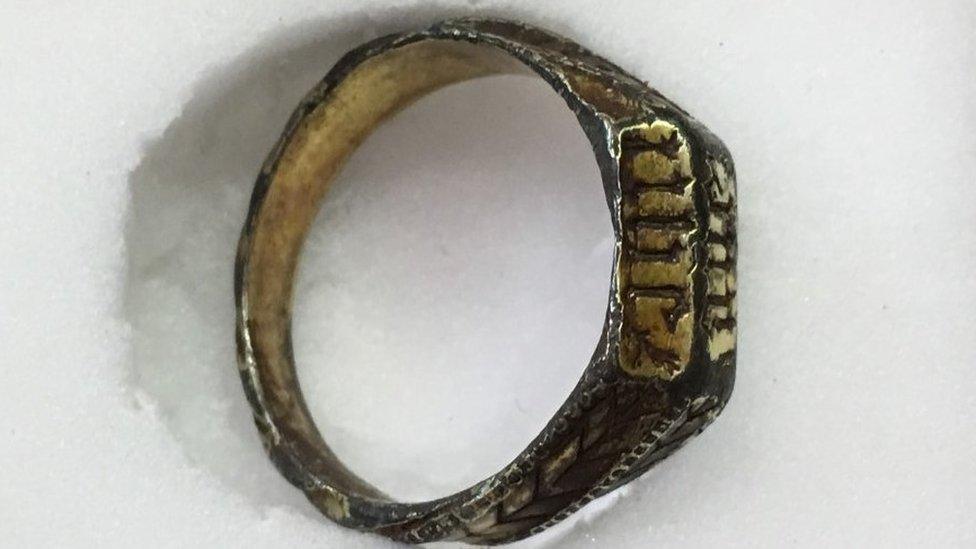
This late medieval silver gilt devotional ring was found in 2014 with the help of a metal detector.
There is an inscription on it which says "IHS Ave Maria" - Jesus Hail Mary in Latin. The ring would have been used to show devotion, probably being used as an aid to prayer and contemplation.
Dr Biebrach, project officer for the National Museum Wales' Saving Treasures, external project, said: "In the late medieval period there was an emphasis on mystical devotion to Christ, trying to find a direct connection with God through prayer.
"So jewellery items like this which had religious legends written upon them or religious words or short prayers, they would enable the wearer to be able to do that.
"And I think what is particularly interesting about this item is that it's quite worn on the top and it's almost as though whoever was using it as a devotional aid was actually caressing it or rubbing it in their hands at the same time.
"That's entirely possible, for example, as you might handle your rosary beads while you were praying.
"So this was something that was very valued by somebody and held great religious and spiritual significance for the owner."

Silver livery badge found in Pentyrch, Cardiff

This is quite a large livery badge probably dating from the late 17th Century. It is in the form of a cockerel and was found in fragments, with some pieces lost.
It has part of a Latin moto on it - "Si deus mobis cum" - which translates as "If God is with us" and it would probably have ended with "no-one can be against us" on one of the missing sections.
"The really interesting thing about this is the way in which it was found," said Dr Biebrach.
"It wasn't found by a metal detectorist, this was actually found down a rabbit hole.
"The finder was out hunting rabbits and digging a rabbit out of its hole and he actually came across this.
"So how it got to be in the rabbit hole in the first place is a mystery, but it is certainly quite an unusual way of discovering a treasure item."

Gold pendant found on land near St Donats, Vale of Glamorgan
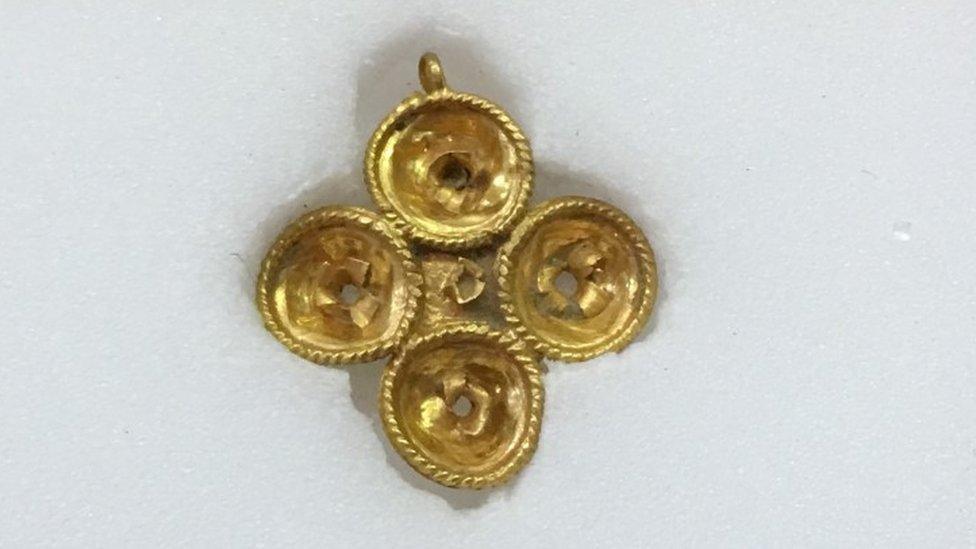
A metal detectorist found this pendant in 2011 and it probably dates from the early 16th Century.
"The circles are forming a cruciform shape and originally they probably would have been fitted with little pearls or semi-precious stones," said Dr Biebrach.
"It might have looked a bit like a flower.
"It's been compared to some of the jewellery items that you can see on early-16th Century portraits of the Tudor court.
"So certainly this would have been for use by a rather well off lady of the early Tudor period."
- Published30 April 2017

- Published7 April 2017
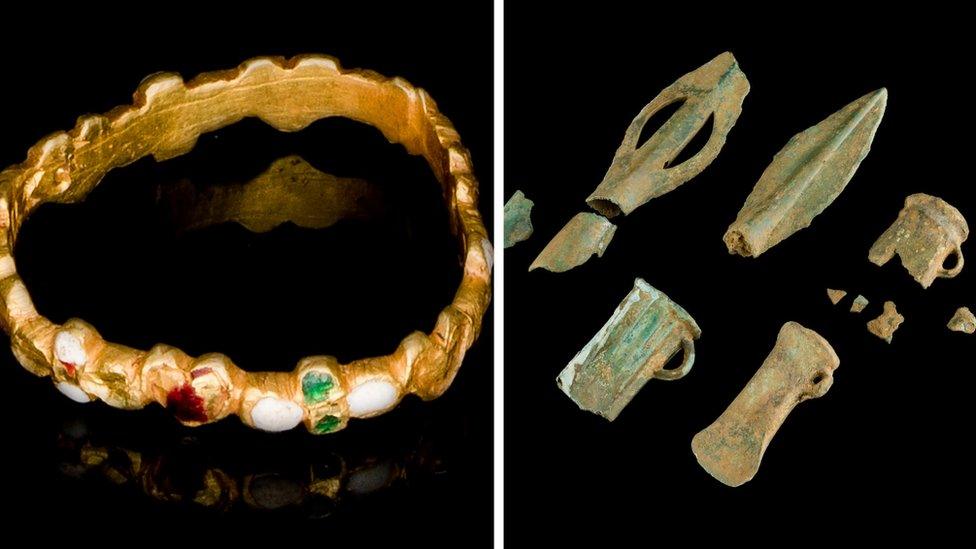
- Published19 September 2016
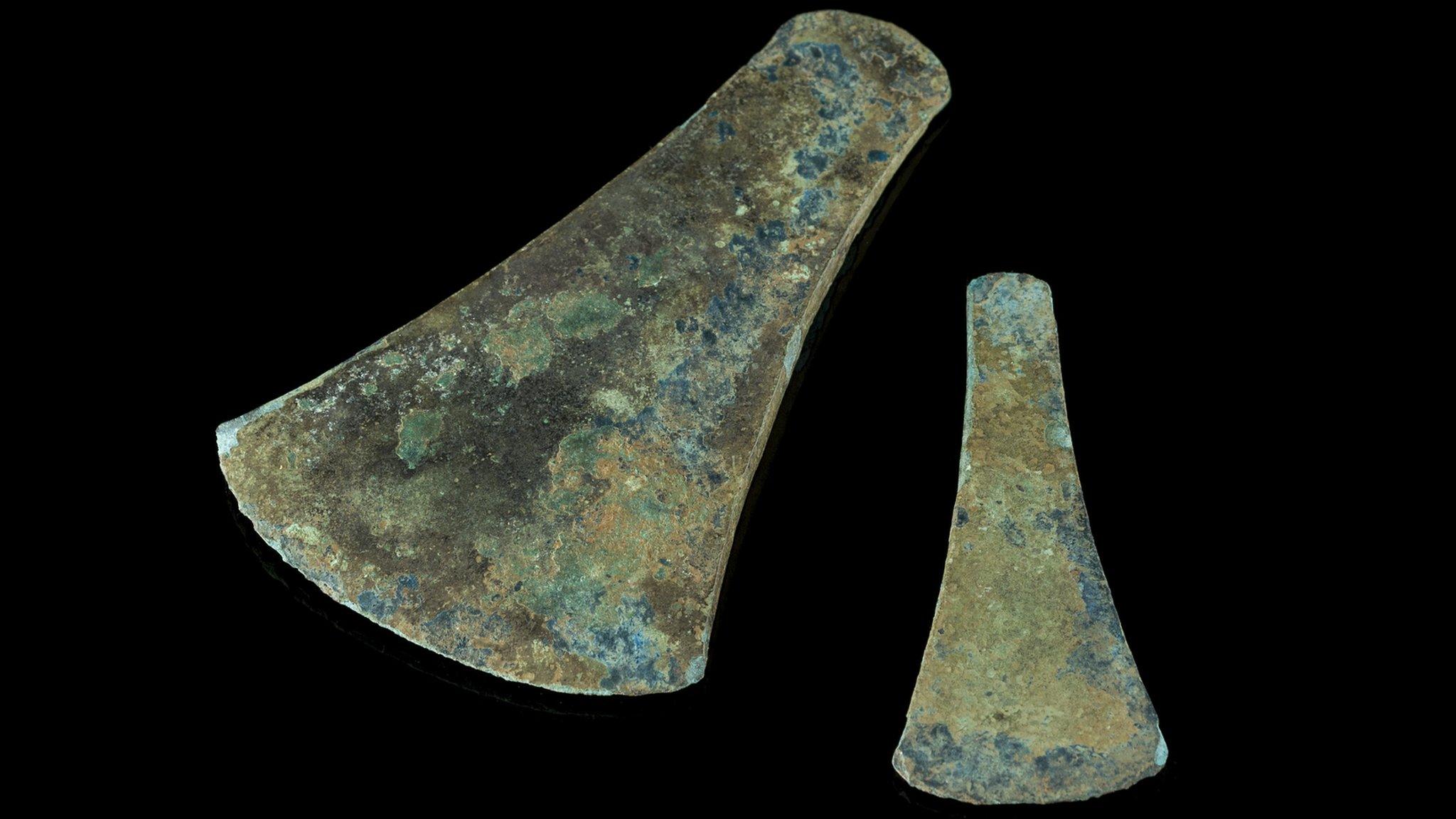
- Published19 August 2016
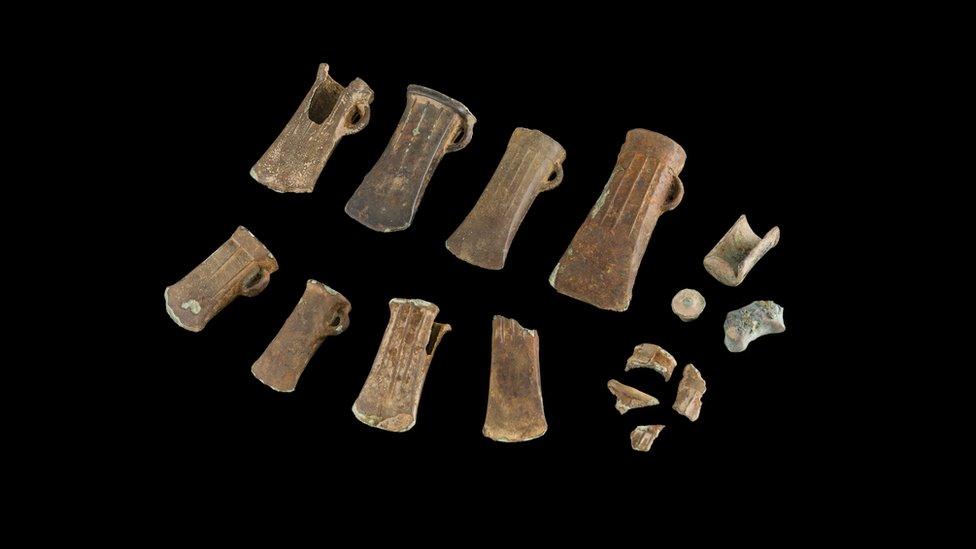
- Published14 October 2014
